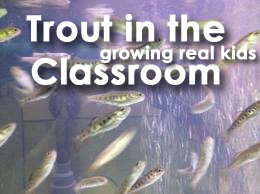The first in a series of growing real kids
I was recently helping my 4th grader with her math homework, and had to excuse myself to go to the bathroom so she would not see me cry.
The math problem that brought tears to my eyes began with, “The bar graph below shows the number of times Will wrote the letters A,B,C,D,E”. It went on to ask real world questions like, “How many more letter “A”s did Will write than the letter he wrote the least number of times?”
There is no description of Will. We don’t know if he is a cryptologist working on creating or breaking a secret code in order to assist his country in defense against its enemies. Perhaps if that was the case, someone might be interested in how many times he uses a particular letter.
This leaves the most important question unasked, who cares about Will? Who cares how many times Will used the letter A, the letter B, the letter C, or even the beloved letter E? Who cares?
People talk about using real world situations to help children understand math and science, and some people are actually doing that with a program called Trout in the Classroom
The concept of Trout in the Classroom has been around for over twenty years, but in the last ten it has become more popular. A lot of credit can be attributed to the non-profit organization Trout Unlimited which has chapters nationwide and often provides local resources.
TroutInTheClassroom.org is the premier Internet resource for schools who implement a program that allows them to:
- Raise trout from eggs to fry.
- Monitor tank water quality.
- Engage in stream habitat study.
- Learn to appreciate water resources.
- Begin to foster a conservation ethic.
- Grow to understand ecosystems.
With the trout in the classroom concept, young scientists and mathematicians are responsible for raising eggs into trout that are then released into local waters.
Some of these responsibilities include maintaining measurements of temperature, pH, DO2, and nitrate levels in their aquarium; while simultaneously learning how plants and animals work together in an ecosystem and monitor the ammonia/nitrogen cycle.
The young scientist observe and record, and then input their data into a computer from which they can create tables and graphs….just like in the real world.
Other lesson plans from TroutInTheClassroom include studying a local stream to measure substances in mg/L or ppm; and, studying the different concentrations of a pollutants in water.
The students can also study the impact of social influences like over development, floodplains, as well as issues of water rights and water conservation.
TroutInTheClassRoom.org also offers lesson plans that incorporate language arts and fine arts.
The NJ chapter, NJTroutInTheClassroom.org is a local resource that provides support and advice for teachers in NJ. For instance, in New Jersey, tanks must be set up by September 15 of the school year in order to provide a healthy environment for eggs and fry. They also provide answers to frequently asked questions such as initial cost – which is between $1,000 & $1,200.
Trout in the Classroom does not make news in NYC, simply because 200 schools already take part. It is still newsworthy in other parts of the country where schools in Montana, West Virginia, and California’s Napa Valley are now implementing or expanding the program.
Trout in The Classroom is not all science and math, it also has the fun aspect for children to raise fish that become like pets — but eventually get set free in local waters.
Submitted by C.McCormick
Next up in the series: Teaching Advertising Tricks to Kids
TROUT IN THE CLASSROOM 2010
Trout in the Classroom in NYC


Singapore Trout?